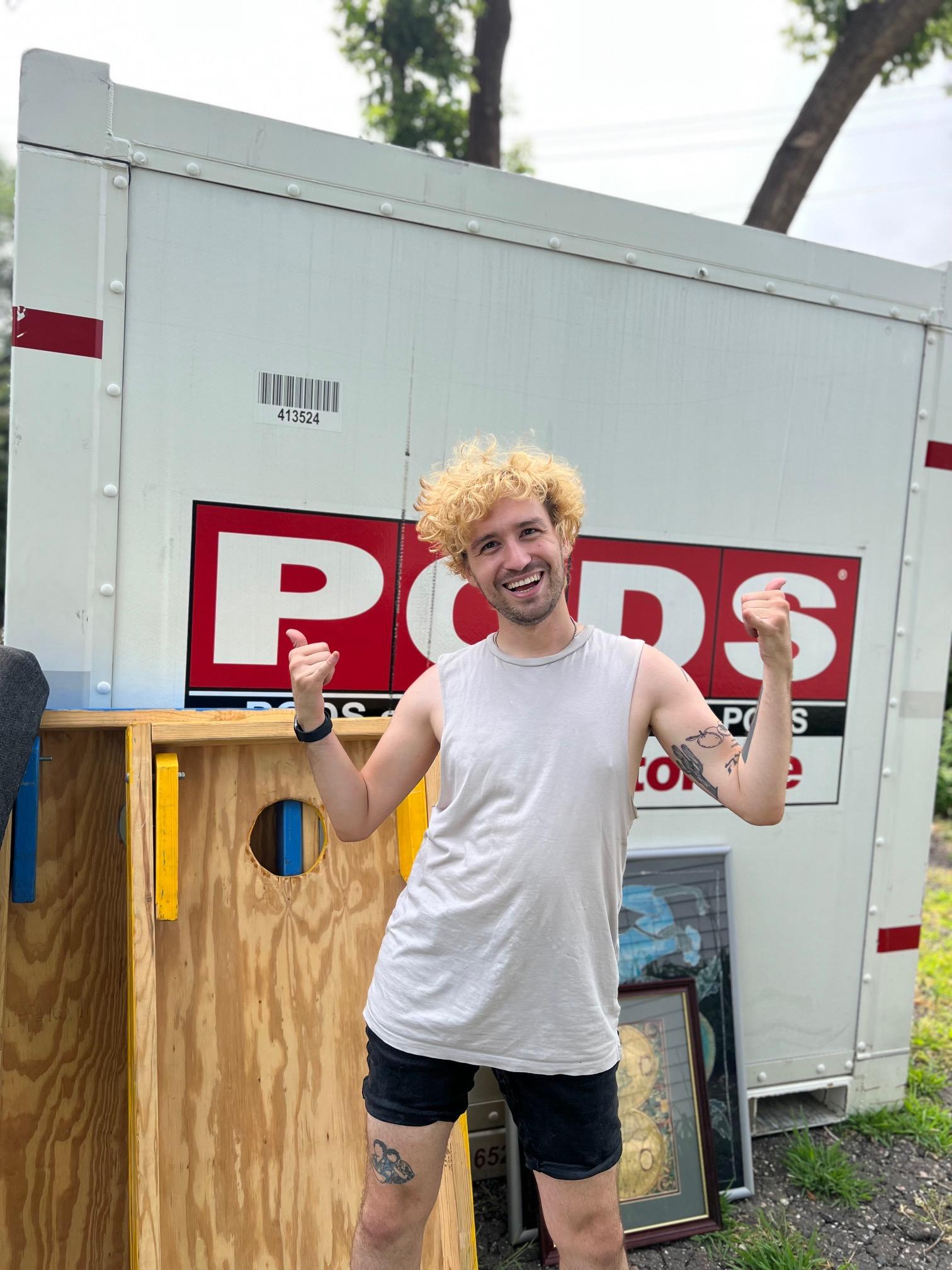How Much Do Storage Units Cost?
Need some extra elbow room? Whether you’re a homeowner or a renter, self-storage facilities are a great option for finding some extra space. Plenty of folks book storage space while renovating their home, to help with downsizing, or just to get more space in a crowded house or apartment.
Looking for a container company that can move your belongings and offer short- or long-term storage while you settle in? Check out our list of the best moving container companies.
Learn MoreStorage units are great space savers, but they do come with setup and monthly fees. Storage unit prices vary a lot, though, so it can be tough to estimate your average monthly costs before booking.
But don’t worry: moveBuddha’s readers and move experts have you covered. In this guide, we’ll break down average storage unit prices and how to find the best self-storage companies.
Self-storage cost
We’d love to give you a flat-rate average price for self-storage, but the monthly costs differ based on a lot of factors.
Self-storage cost factors
Self-storage unit pricing definitely differs from state to state and city to city. However, other factors play into your monthly fee, including:
- Unit size: The size of the unit has a direct impact on the cost of a storage unit. Larger units cost more, while smaller units are usually more affordable. You want to pick a unit size that meets your storage needs without a lot of extra space. Get rough measurements of the items you want to store so you pick the right unit size.
- Demand: Sometimes smaller units are more expensive because they’re in demand. This is more common in college towns where students book small units for summer storage. In this case, you might actually get a better deal for a larger unit, so demand does matter.
- Climate control: Climate-controlled storage units are great for storing sensitive belongings like collectibles or electronics, but they will definitely increase your average storage unit costs. These units cost more because they use A/C to protect your belongings from extreme temperatures.
- Access type: 24-hour access or drive-up access are usually a premium. This isn’t always the case, but for most facilities, the more convenient it is to access the unit, the more you’ll pay.
- Special features: Storage facilities will usually offer some kind of add-ons at a premium that will increase your self-storage costs. This includes vehicle storage, extra security measures, and onsite amenities.
- Time of year: Public storage facilities usually see higher demand in peak season from May to September. Try to store your items in fall or winter to see cheaper storage unit prices.
- Duration: How long do you plan to store your stuff? Storage companies will often give discounts for storage — like offering the first month free — to renters who agree to long-term storage contracts. Short-term or month-to-month agreements usually result in higher storage unit prices, although you aren’t locked into a contract.
Average monthly storage unit cost
We recommend getting a ballpark estimate of your average monthly costs before booking a unit. This way, you know roughly how much you’re on the hook for every month and can budget accordingly.
Check out the table below for an idea of average self-storage prices.
| Storage unit size | Standard | Climate-controlled |
|---|---|---|
| 5 x 5 | $60 | $85 |
| 5 x 10 | $77 | $106 |
| 10 x 10 | $115 | $152 |
| 10 x 15 | $150 | $190 |
| 10 x 20 | $190 | $240 |
| 10 x 30 | $234 | $258 |
| 20 x 20 | $259 | $270 |
Of course, your actual storage unit prices will vary depending on a lot of factors. These are just guesstimates based on moveBuddha reader data. Always request multiple quotes from several storage facilities so you get the best deal for your storage needs.
Climate-controlled storage unit prices
Climate-controlled storage units are designed to maintain a consistent temperature in the unit at all times. Unlike standard units, they can regulate temperature and humidity levels, which is helpful for protecting items that can’t survive in extreme heat, cold, or humidity.
While the average storage unit cost for climate-controlled spaces is higher, some renters justify the added expense because it protects valuable or delicate items.
You might want to go with a climate-controlled storage unit for items like:
- Rate collectibles like coins, stamps, and comics
- Electronics like computers, TVs, and stereos
- Furniture that’s vulnerable to warping, cracking, or molding
- High-value artwork
- Musical instruments
- Old photographs
- Wine
- Important documents
Additional storage options
Most people go for standard or climate-controlled storage, but there are actually other storage options to choose from.
Business storage
Specialized storage companies offer storage for everything from inventory to office supplies. You might consider business storage if:
- Your business is renovating its space
- You’re relocating
- You need more secure asset storage
Security measures are extra-important for business storage, especially if you’re storing documents. Look for storage facilities that include security guards, cameras, keycard access, and other measures.
Drive-up storage
Drive-up storage units are ideal for anyone who needs to frequently access their stored items. These units allow you to drive directly up to the unit for easy loading and unloading. If you aren’t thrilled at the prospect of moving a couch up a few flights of stairs to a storage unit, drive-up could be your best bet.
Portable and container storage
This is a different type of storage option where you hire a moving container company to drop a storage container off at your location. You load the container at your convenience, and you either store it onsite or ask the company to move it to a storage facility.
Containers are convenient for accessing your stuff onsite. They’re also great for anyone who wants to pack at their own pace or move the container to different locations. However, portable storage is more expensive than standard self-storage.
Some people will even use portable containers for moving. moveBuddha reader Alex did just that for his long-distance relocation from Minnesota to Washington. He loved PODS’ professional service, on-time delivery, and safe transport. They only offered three days for loading and unloading, but that was more than enough for Alex.



Outdoor storage
This is ideal for belongings that are less sensitive to the weather, like vehicles, RVs, and boats. If you want RV storage, look for a storage facility that offers a fenced outdoor space. Some offer covered outdoor storage to shield your vehicle from some of the elements.
If you plan on accessing your vehicle often, look for handy amenities like electrical hookups, water hookups, and washing stations.
Finding the right storage unit
Storage unit pricing varies a lot, so it’s essential to find a unit that offers the best protection and value for your money. Follow these tips to find the best storage unit for your situation:
- Pick the right unit size. Make a game plan for the items you plan to store and measure everything ahead of time. It might sound like a pain, but measuring ahead of time will tell you exactly how much square footage and unit size you need. Check out moveBuddha’s storage unit size guide to avoid paying for unused space.
- Research different storage companies. You’re trusting this storage company with your belongings, so do your homework before booking a storage unit. Ask about their storage unit insurance policies, read their reviews and ratings, and consider their specials or discounts for storage. Narrow the list down to your top three favorite storage facilities and request a quote from all three. This will give you an apples-to-apples comparison so you pick the best unit for the money.
- Consider location. Units in major cities like New York City are going to cost more than units in less populated areas. If you don’t need to access the unit frequently and live in a major city, consider choosing a unit slightly further away to save money.
- Decide on climate control. Do you need a climate-controlled storage unit? They cost more, but they’re essential for safely storing irreplaceable or valuable items.
- Read the fine print carefully. Don’t sign a contract blindly. Look for administrative fees, security deposits, and requirements for moving in or moving out of a storage unit. If anything sounds like a deal-breaker, go with a different storage company.
- Ask about security features. They don’t need armed guards or anything, but the storage company should have reasonable security measures. That includes surveillance cameras, lighting, and key or keycard access.
- Consider access hours: Always check the storage facility’s hours before booking. If you can only get to the facility at 7 p.m. and they close every day at 6 p.m., that’s not going to work out! Some facilities offer 24-hour access, but ask if this is standard or an extra charge.
Storage unit pricing is just one factor. Prioritize your storage needs and do thorough research to find the right storage solution for your requirements and budget.
FAQ about storage unit prices
How much does it cost to rent a storage unit?
Storage unit prices start as low as $57 a month for a standard 5 x 5-foot unit and cost as much as $250 a month for a 10 x 30-foot climate-controlled unit.
Several factors influence the cost of a storage unit, including:
- If it’s climate-controlled
- 24-hour access
- Security measures
- Storage size
How big is a 10 x 10 storage unit?
A 10 x 10-foot storage unit is 100 square feet, which is equivalent to a standard one-car garage. That’s large enough to store the contents of a one-bedroom apartment or a few large appliances, a bed, a couch, and some boxes.
What is the average cost for a 10 x 10 storage unit?
The average cost will vary by location and whether the unit is climate-controlled. On average, pricing ranges from $98 to $152 for a standard unit, while a climate-controlled unit costs between $152 to $176.
Are pods more expensive than storage?
Pods are portable storage rentals. They’re more expensive than traditional self-storage units because they’re mobile. A moving container company delivers the pod to your location and transports it off-site. The transport service usually makes pods a more expensive option than standard storage units, but some people prefer the convenience.
Are self-storage units worth it?
Storage units are worth it if:
- You’re moving or renovating
- You need extra space
- You need a secure space to store valuables
The downside is that you’ll pay an upfront deposit and an ongoing monthly fee. However, most people say renting a storage unit is a great way to free up space without purging their belongings.
Not what you were looking for?
Check out other categories that can help you find the information you need!

